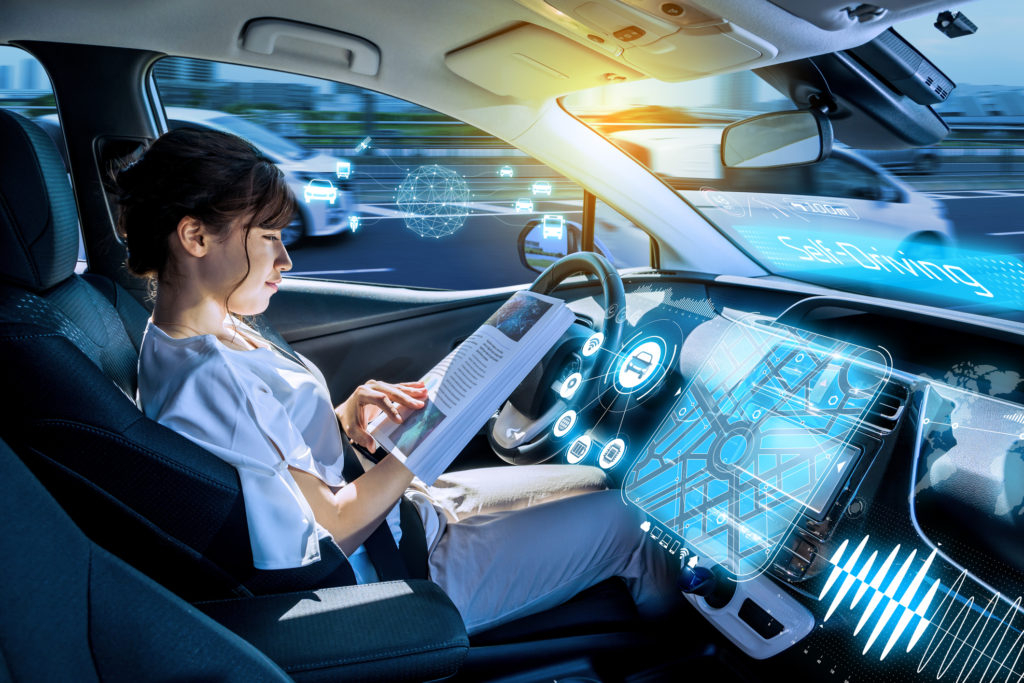Index Surge: Amplifying Your Insights
Stay updated with the latest trends and news across various industries.
Are We There Yet? The Race to Trusting Self-Driving Cars
Explore the thrilling race toward self-driving cars! Are we ready to trust AI behind the wheel? Join the journey and find out!
Understanding the Technology Behind Self-Driving Cars: How Do They Work?
Self-driving cars, also known as autonomous vehicles, leverage a combination of advanced technologies to navigate and operate without human intervention. At the core of this transformation lies a sophisticated array of sensors, including radar, lidar, and cameras, which gather real-time data about the vehicle's surroundings. These sensors feed information into powerful computing systems, which utilize machine learning algorithms to process and analyze the data. The result is a vehicle capable of making informed decisions—like when to stop, accelerate, or change lanes—based on its interpretation of the driving environment.
To ensure safe operation, self-driving cars rely on a multi-layered approach that includes mapping and localization. High-definition maps provide essential information about road conditions, traffic signals, and potential obstacles. Meanwhile, the vehicle’s onboard systems continuously compare real-time data against these maps to maintain its position with precision. Additionally, a robust communication framework enables these cars to interact with one another and the surrounding infrastructure, further enhancing their ability to navigate complex driving scenarios. Understanding these technologies is crucial as they reshape the future of transportation.

The Safety Debate: Are Self-Driving Cars Really Safer Than Human Drivers?
The discussion surrounding the safety of self-driving cars versus human drivers has gained significant momentum in recent years. Proponents of autonomous vehicles argue that they are designed with advanced technology such as collision avoidance systems, predictive algorithms, and real-time data processing capabilities that can potentially reduce accidents caused by human error, which accounts for over 90% of road incidents. Moreover, self-driving cars are programmed to adhere strictly to traffic laws and avoid risky driving behaviors, making them theoretically safer than their human counterparts. This reliance on technology fosters hope for a future with fewer traffic-related fatalities and injuries.
However, skeptics point out that while autonomous driving systems can outperform human drivers in many scenarios, they are not infallible. Issues such as software malfunctions, cybersecurity threats, and the inability to navigate complex, dynamic environments can pose significant risks. In addition, the ethical implications of programming these vehicles to make life-and-death decisions raise questions about how they should react in unavoidable accident scenarios. As the debate continues, it becomes clear that while self-driving cars may have the potential to enhance road safety, they also introduce new challenges that must be carefully considered before widespread adoption.
Public Perception and Acceptance: What Will It Take for Us to Trust Autonomous Vehicles?
The emergence of autonomous vehicles has sparked a myriad of discussions regarding public perception and acceptance. To foster trust in these advanced technologies, several factors need to be addressed. First and foremost, transparency in the decision-making processes of these vehicles is crucial. Consumers must understand how and why an autonomous vehicle makes specific choices, particularly in critical situations. This transparency can be achieved through effective communication by manufacturers, emphasizing the safety measures in place, such as fail-safe systems and extensive testing protocols. Additionally, safety statistics and real-life success stories can significantly bolster public confidence.
Moreover, public familiarity with autonomous vehicles plays a pivotal role in influencing societal attitudes. Increased exposure through pilot programs, ridesharing services, and educational initiatives can help demystify the technology. Influencing factors such as peer experience and media portrayal also shape public opinion; thus, engaging communities through informative campaigns can be beneficial. Ultimately, building a robust framework of trust involves not only demonstrating the reliability of autonomous vehicles but also actively involving the public in conversations about their development and implementation. A collaborative approach that includes feedback and concerns from potential users can lead to a more positive reception.